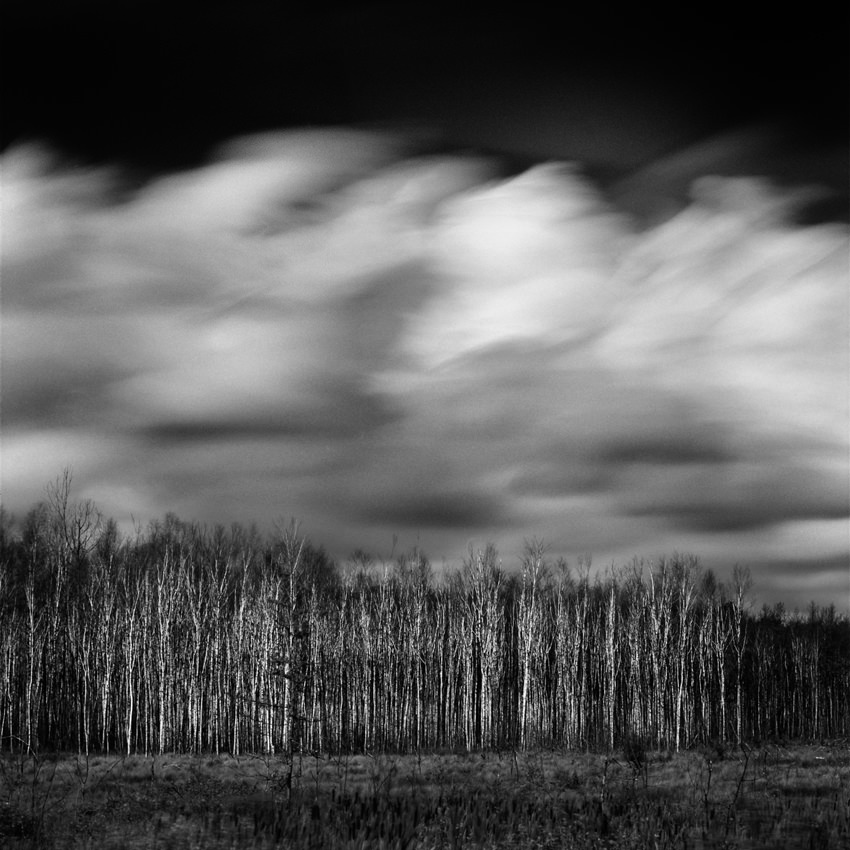Choosing the perfect black and white art print for your home or office interior is more than just picking a piece of art – it is about creating a visual statement that reflects your personality, style and aesthetic preferences. In a world that celebrates self-expression, the art you choose to decorate your walls plays a significant role in shaping the ambience and character of your living space or working environment.
B&W prints have a timeless appeal that goes beyond trends and fashions, making them a versatile choice for any style of home décor. Whether you’re drawn to the simplicity of minimalist design, the elegance of classic aesthetics or the boldness of contemporary art, there’s a monochrome print to suit your taste.
In this comprehensive guide, we’ll explore the intricacies of choosing the perfect black and white print for your home interior or working space. We’ll explore topics such as assessing your personal style preferences, analyzing your existing decor and determining the right subject for your print. We’ll also discuss practical considerations such as size, scale, framing options and placement strategies to help you make informed decisions that enhance the beauty and harmony of your living space. Whether you’re an experienced art collector or new to decorating, this guide provides the insight and inspiration you need to transform your home with the timeless charm of monochrome world.
With these tips in mind, you’ll be well-equipped to choose the perfect B&W prints for your interior and create a space that is both stylish and meaningful. So embrace your creativity, unleash your imagination, and let your personal style guide you as you embark on this exciting design journey.
Emotional Connection and Storytelling

Deeply connected to human emotions and personal experiences, making it a highly subjective experience, art allows individuals to bring their own thoughts, feelings and interpretations to the artwork, giving it multiple meanings. While photography is an expressive medium, and each printed image carries its own story and visual narrative, choosing a photograph that resonates with you on a personal level will bring a deeper sense of satisfaction and enjoyment to your space.
Black and white photography has an essential potential to inspire strong emotions and portray a variety of sensations, from peaceful and tranquil to edgy and dark. It may be especially effective at communicating mood, drama, or a sense of timelessness.
To bring more meaning and enjoyment to your space, think about the atmosphere and ambience you want to create and choose a black and white print that resonates with your own experiences, interests or aspirations on a deeper level. Consider the narrative behind a black and white photographic print that sparks joy, brings back memories, reflects your own interests and passions and evokes an emotional response to match the atmosphere you wish to establish in your interior.
Assessing Your Personal Style

Before choosing a black and white print, take some time to evaluate your personal style preferences. Your personal style is a reflection of your character and lifestyle, and should narrow down your options and guide your choices so that they not only complement your home decor, but also reflect your individuality and enhance the overall ambience of your living space.
If you’re drawn to classic elegance and timeless beauty, you may have a traditional style. In this case, you’ll likely appreciate black and white prints that feature classic subjects such as landscapes, still lifes, and portraits. Look for prints with intricate details, refined compositions, and a sense of sophistication that complements your traditional decor.
For those with a modern sensibility, clean lines, minimalism, and bold statements are key elements of their personal style. In this case, you may be drawn to B&W works with abstract designs, geometric patterns, and bold contrasts. Opt for prints that add a contemporary edge to your space and reflect your forward-thinking approach to design.
If you have an eclectic style, you enjoy mixing and matching different elements from various periods and cultures to create a unique and dynamic look. In this case, you have the freedom to explore a wide range of monochrome images, from vintage photographs to abstract artworks to pop culture references.
Minimalists appreciate simplicity, functionality, and the beauty of clean, uncluttered spaces. If you’re a minimalist, you’ll likely gravitate towards black and white prints with a minimalist aesthetic, such as geometric shapes, simple lines, and understated compositions. Look for prints that add visual interest without overwhelming your space, and focus on quality over quantity when selecting artwork for your home.
Image Composition and Subject Matter
The composition and subject matter of the photo should be your first consideration when choosing the ideal black and white print. To support the overall theme, mood or environment you want for your interior and to reflect your aesthetic tastes, look for a powerful, eye-catching black and white piece of fine art.
Photographic composition refers to how different elements are arranged within the frame. To ensure the print works with your interior design, consider factors such as placement of objects, leading lines, shapes, symmetry and balance within the frame. Look for prints with strong lines, interesting textures and dynamic contrasts between light and dark areas. A carefully designed image will draw the viewer in, fit your existing décor, interior features and mood, and serve as the room’s main point.
The subject of the print should reflect your personal taste and be in keeping with the overall look and style of the room. Choose a print that speaks to you on a deeper level, as each genre evokes different emotions and can create a specific atmosphere. For example, if you have a modern, minimalist interior, a cityscape or architectural print might work well. If you have a more traditional or rustic space, a seascape or landscape print might be more appropriate.
Contrast and Tonal Range
Black and white photography is recognized for its dramatic contrasts and extensive tonal range to influence mood and provide powerful visual impact. The interplay of light and dark tones is a distinguishing feature of a well-executed fine art black and white photography print, which may give your living space a feeling of depth and drama as well as visual intrigue and dimension.
Consider images with a wide tonal spectrum, from deep rich blacks to crisp whites, when choosing a black and white print for your home or office space. You should also pay attention to how the light is used in the image and how it enhances the overall visual experience.
A well-produced archival black-and-white print should have a wide range of tones, from deep blacks to bright whites, with seamless transitions in between. Strong contrast in monochrome photographs and a balance of highlights and shadows help to make a bold and dramatic statement, while softer contrast can evoke feelings of tranquillity and transcendence.
Texture and Details
In a world increasingly dominated by digital photography, black and white film photography continues to demonstrate the enduring appeal of traditional craftsmanship and has the unique ability to capture very rich tonality and fine textures in exquisite detail within a scene that add extra dimension to a print. The organic grain structure of film brings a certain charm and character to images that is difficult to recreate in digital imagery. The subtle grain patterns that are created during the film development process contribute a distinctive touch to the final print. These delicate imperfections give the photograph a sense of authenticity, creating a nostalgic and timeless feel.
Examine the print for texture and determine if it matches your desired aesthetic, which can provide a tactile quality and immersive element to your interior while enhancing the overall visual experience. Consider whether you prefer a shiny, smooth finish or a more grainy, textured look. Some black and white prints may have a softer, more ethereal feeling, while others have crisp, intricate detail.
Print Size & Proportions

The size, proportions and aspect ratio of your chosen black and white print in relation to the available wall space will play a key role in determining its impact in your environment. When choosing the size of your print, think about the dimensions of the wall, the scale of the room where you are displaying the photograph, and other decorating elements.
Choose a print size that is proportionate to the space and allows the photo to be prominently featured without overwhelming the surroundings. Also, consider whether a landscape or portrait orientation would be best for the selected work, and try to visualize how the framed image will fit into the room, ensuring that it doesn’t overwhelm or get lost among other decor items in the area. As I offer art prints for sale in a square format, which conveys a sense of stability, serenity and peace, these photos will fit perfectly into interiors of all proportions, sizes and color schemes.
Larger prints tend to make a bold statement, have a more striking presence and work well as a captivating focal point on bigger walls or in spacious areas such as living rooms or offices. Smaller images can be used as accent pieces, can be grouped to create a gallery-like effect and are better suited to intimate spaces such as bedrooms or hallways where they can be appreciated up close and complement the existing décor.
Print Quality and Paper Type
If you’re looking for visually pleasing black and white images that won’t fade and stand the test of time, consider high-quality prints on acid- and lignin-free archival fine art paper or traditional silver gelatin paper, designed to maintain the quality and durability of the print for years to come.
Inquire the photographer about the printing process, ensuring that high-quality pigment inks or traditional wet printing techniques were used to produce the print. A well-crafted print will ensure the details, textures, and tones are accurately reproduced, even in larger print sizes. The print should be free from any visible flaws, such as scratches, dust, or pixelation.
Remember that the photographic paper you choose might have a big influence on how the print looks and feels overall. Different papers produce varying textures and tones, adding to the overall aesthetic and feel of the black and white print. Matte photo papers are commonly chosen for their non-reflective and smooth finish, offering a more classic, elegant and timeless look; while glossy, semi-gloss or metallic materials can enhance contrast and depth adding contemporary touch.
As a final thought, don’t forget to experiment with different styles, genres and compositions to find artworks that resonate with you on a personal level and bring joy and inspiration to your everyday life. Don’t be afraid to mix and match different pieces to create a curated gallery wall or focal point in your home. Combining images of different sizes, shapes and themes can add visual interest and personality to your space, making it truly unique.
Finally, trust your instincts and go with your gut when selecting black and white prints for your home. Choose the works that speak to you emotionally and evoke a sense of beauty, wonder or nostalgia. After all, your home should reflect who you are and what you love, so don’t be afraid to let your unique personality shine through when you’re decorating.
FAQs
Shop Black and White Fine Art Prints
With my private collection of stunning black and white art prints, you can bring the timeless elegance of black and white art into your home. We have the ideal print to complement your style and improve your living area, whether you’re looking for quiet or want to make a big statement. My long exposure landscape and seascape prints come in a range of square sizes to add stability and tranquility to any space, regardless of its size or color palette. Photographer Alexander Kladov creates each piece by hand on premium archival paper with the intention of stirring strong feelings and turning it into a treasured focal point for your house.




